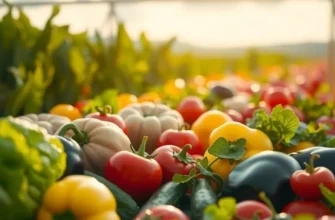Cooking can be a delightful experience, but the mess that often accompanies it can detract from the joy. By implementing a few straightforward techniques, you can streamline your cooking process and keep your kitchen tidy. This guide aims to equip home cooks of all skill levels with practical tips to conquer kitchen chaos and enhance your culinary game.
Prepare Your Workspace Like a Professional

Organizing your cooking space before you start is crucial for both efficiency and creativity. Begin by clearing your countertops entirely. Remove any items that are not essential to cooking, like mail, keys, or decorative items. This simple act creates a canvas where clutter does not stifle your culinary creativity.
Next, consider the layout of your tools and ingredients. Professional chefs use the French concept of mise en place, translating to ‘everything in its place’. This means having all your ingredients washed, chopped, and measured before beginning to cook. Arrange these in bowls or plates near your workstation. Not only does this minimize mid-cook scrambling but also ensures you have everything you need readily at hand.
Keep your cooking utensils within easy reach. Use a countertop holder for common tools like spatulas, wooden spoons, and whisks. If drawer space allows, organize cutlery and specialty tools by function to reduce time spent searching during meal prep. For more comprehensive organization ideas, you may find handy tips in our article on practical ingredient batching.
Your chopping board should be large enough to accommodate the busiest tasks with ease. It should sit on a non-slip mat to ensure stability. Consider setting up a dedicated waste bowl for scraps and offcuts to keep your board clear. This saves multiple trips to the trash or compost, streamlining the cleanup process.
Spices and condiments are best kept nearby but should be organized in a way that avoids clutter. If cabinet space is limited, a tiered shelf or magnetic strip can make better use of vertical space. Ensure frequently used items, like olive oil and salt, are within arm’s reach.
Utilize a cleaning-as-you-go strategy to maintain tidiness. Fill your sink with warm, soapy water at the start. As you finish with each tool or bowl, place it directly in the sink. This minimizes the post-cooking dish pile and limits the mess stacking up around you.
Lighting often goes unnoticed, yet it greatly influences your working efficiency. Ensure your workspace is well-lit, either with direct overhead lights or task lighting under cabinets. Shadows can obscure what you’re doing, leading to accidents or subpar results.
Having a clean, professional workspace not only speeds up your cooking but also enhances your creativity and focus. The benefits of a prepared and structured environment cannot be overstated in achieving a satisfying cooking experience.
Efficient Clean-Up Strategies During Cooking

Cooking is a sensory experience, but it shouldn’t descend into chaos. Adopting a mindset of tidiness while you cook can drastically reduce the aftermath in your kitchen. Here are practical strategies to keep mess to a minimum as you prepare delicious meals.
Start with a spotless kitchen. Ensure your surfaces, utensils, and tools are clean before beginning. This baseline prevents a build-up of chaos and makes it easier to clean as you go. Arrange your workspace by placing bowls, cutting boards, and ingredients within arm’s reach. This setup minimizes movement and reduces the chance of accidents.
Utilize a one-bowl waste system. Keep a large bowl or a small compost bin nearby for discarding scraps and waste. This simple step keeps your counters clean and saves time walking to the trash during meal prep.
Implement the ‘clean as you go’ philosophy. Washing pots, pans, and utensils immediately after use prevents clutter. Instead of waiting until the end to tackle a mountain of dishes, cleaning incrementally makes the post-cooking clean-up much more manageable.
For those stubborn, stuck-on messes, soak dishes in soapy water while still warm. This technique saves scrubbing effort and improves efficiency during the subsequent washing.
Keep a damp cloth or a roll of paper towels handy. Wiping surfaces frequently throughout the process prevents spills from drying and becoming harder to clean. This small habit contributes significantly to maintaining a tidy environment.
Another strategy is to use mise en place—prepare and measure all ingredients before starting. This method not only streamlines cooking but also reduces the mess from scrambling for ingredients or utensils mid-recipe.
Leverage task batching to maximize efficiency. Group similar tasks such as chopping vegetables or mixing batters together to minimize clean-up time. This strategy is especially relevant when working with multiple dishes. You might explore practical ingredient batching as a step toward streamlining your process further.
Adopting these efficient clean-up strategies during cooking not only turns culinary chaos into cultivated calm but also frees you to revel in the more enjoyable aspects of food preparation. With these habits, you can create not just meals, but also a serene and organized kitchen atmosphere.
Final words
Reducing prep mess is not just about maintaining a tidy kitchen; it’s about creating a stress-free cooking environment that allows you to enjoy your culinary endeavors. By organizing your workspace and implementing efficient clean-up strategies, you can elevate your cooking experience and focus more on the flavors and creativity in your dishes. Embrace these practices, and you’ll find that less mess translates into more enjoyment in every meal you prepare.







